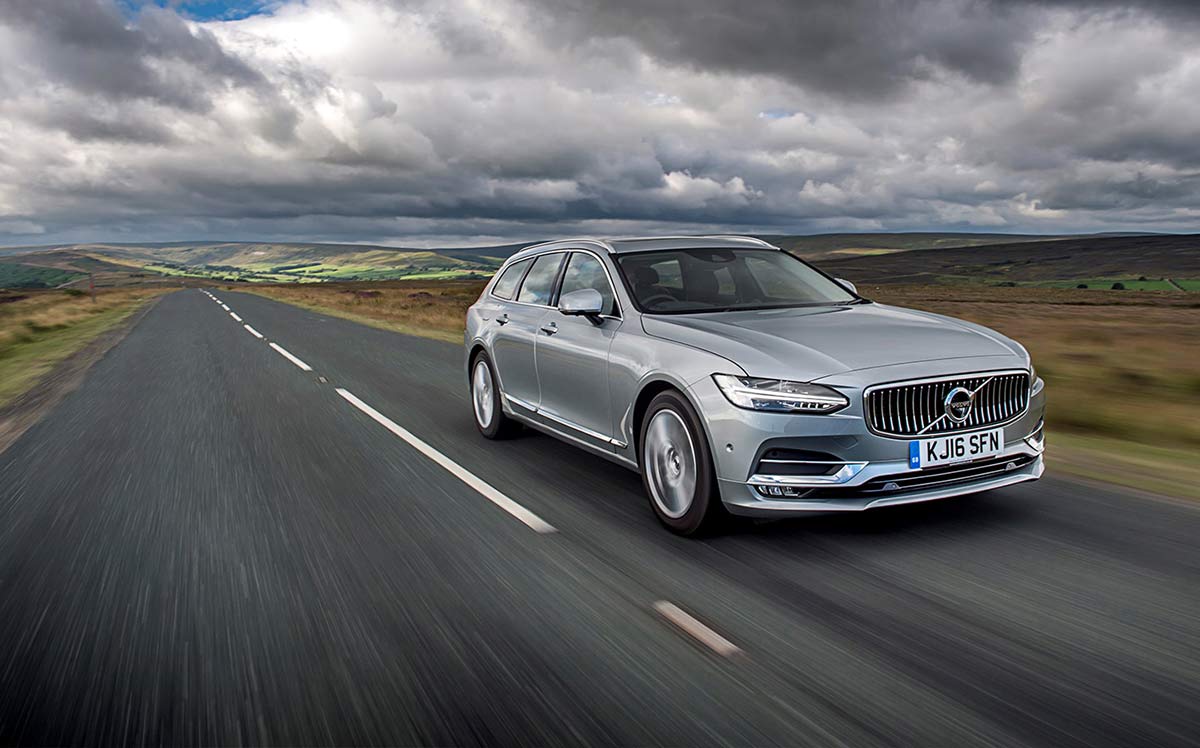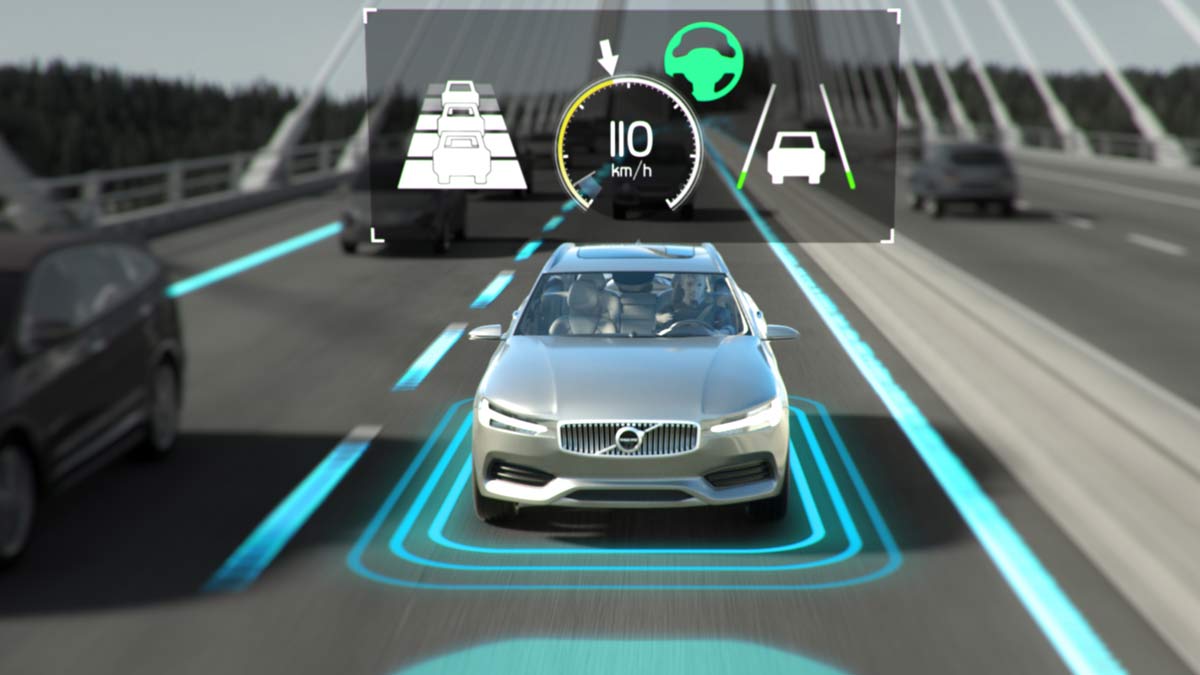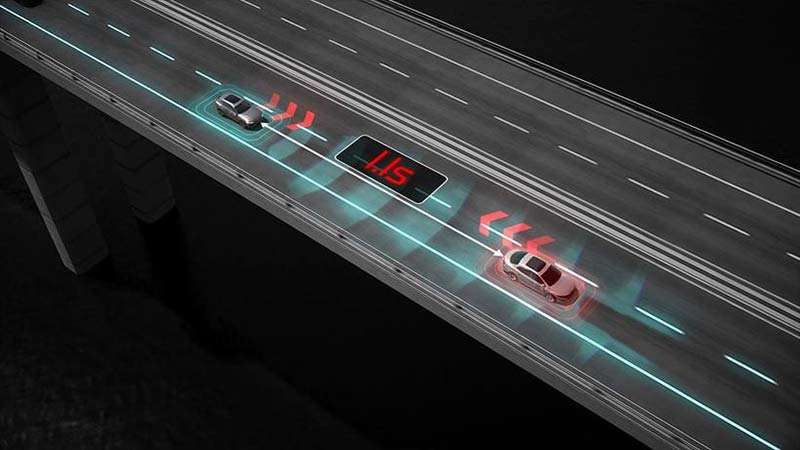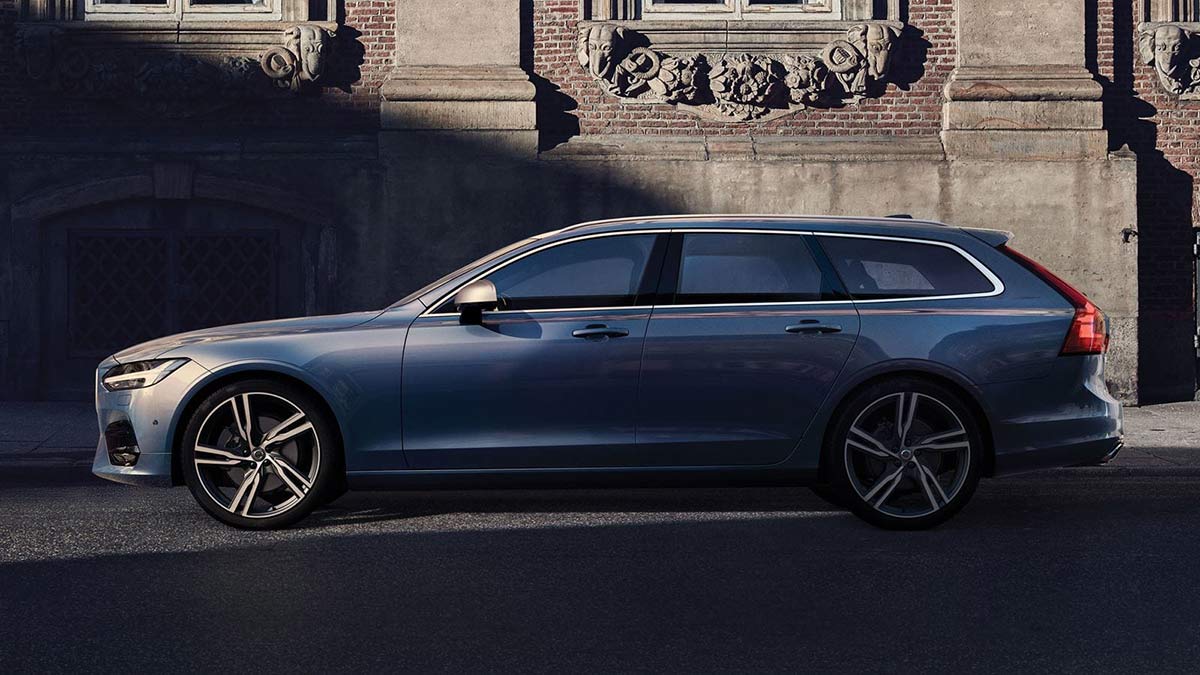Empowered driving
IntelliSafe Assist is a suite of features that delivers a high level of collaborative, convenient and intelligent assistance in everyday traffic situations, designed to lessen the cognitive load and allow you to focus on your driving enjoyment. Features include Adaptive Cruise Control, Pilot Assist, Curve Speed Adaption and Distance Alert. Learn more below.
Pilot Assist
Pilot Assist is designed to provide collaborative, intelligent and directable assistance while the driver maintains control at all times. Pilot Assist reduces driver strain in tedious driving situations and increases safety margins. The system delivers enhanced speed and distance keeping and a more consistent and precise position in lane. When activated, the system also has a positive effect if a conflict is about to happen — the performance in emergency steering and braking is improved.
Pilot Assist works at speeds up to 130km/h and is particularly useful in highway conditions, helping to reduce the effort required when driving at higher speeds. For the EU and US, Pilot Assist is connected to the navigation system and has an ‘electronic horizon’ function that increases accuracy and performance in curves. Western European markets benefit from Curve Speed Adaption, a function that uses map data to adapt cruising speed in curves to a comfortable level.
While using Pilot Assist you must keep your hands on the wheel and your eyes on the road ahead at all times.
Adaptive Cruise Control
Helping you to maintain your preset gap to vehicles in front at all speeds up to 200 km/h, Adaptive Cruise Control is a supportive partner for a more relaxed driving experience, reducing driver strain in tedious driving situations. It also offers more precise safety margins to the vehicle ahead.
Just select the desired speed and time gap to the vehicle in front. When the radar sensor detects a slower vehicle in front, the speed automatically adapts to that vehicle. And when the road is clear, the car resumes the selected speed. Whenever you want, you can also select conventional cruise control.
“Cars are driven by people. The guiding principle behind everything we make at Volvo therefore is, and must remain, safety.”
Gustaf Larson, co-founder of Volvo

How accidents can make cars safer for everyone
Since the 1950s, we have studied more than 43,000 cars in real-life accidents with 72,000 occupants. As a result, this has contributed to many innovative systems such as WHIPS, SIPS, and numerous child safety products. We have now gathered more than 100 research papers, available for anyone to download. We hope this will lead to safer cars for everyone – regardless of gender and size.
E.V.A. - EQUAL VEHICLES FOR ALL
Frequently Asked Questions
-
For how long has Volvo tested with female crash test dummies?
We have tested with a female crash test dummy since 1995, starting with the only available small sized female frontal impact dummy, HIII 5th percentile. In 2001 we included a small sized side impact dummy, SID2s. As the world-first midsized female crash test dummy, we developed a virtual model of a pregnant woman early 2000s. Ten years later we extended the crash test dummy family with a midsized female crash test dummy for whiplash evaluation in rear end impacts, as the only original car manufacturer in the co-development of EvaRID.
-
How does Volvo Cars develop safe cars based on real world data?
Data on Volvo cars in Sweden has been collected and stored in Volvo Cars Statistical Traffic Accident Database since 1970. The aim is to provide a large body of readily available data on the types of injury that arise in conjunction with specific accidents. The findings can then be applied. The good news is that we gathered data in the same way for many years, which has made it possible to map our progress and improve our success rate over the years.
-
From how many crashes has Volvo Cars collected data?
In a pre-study in 1967, we started out with 28,000 cases. Since 1970, we have included more than 43,000 cars in real-life accidents with 72,000 occupants in our statistical database. In addition, we use data from several databases globally when doing our analysis.
-
What knowledge does the E.V.A. Initiative consist of?
The knowledge you are able to access and download through this project is a collection of more than 100 research papers. It is a collection of some of the research behind the development of safety innovations in Volvo Cars since the 1950s.
-
What is Volvo’s 2020 Safety vision?
That no one should be killed or seriously injured in a new Volvo car.
-
Do I still have to wear a safety belt in a Volvo?
Yes, the safety belt is still the most effective way to save lives and reduce injuries in car crashes. It’s also mandatory in almost all countries in the world. Volvo’s safety belts are also continually being refined to further improve safety for everyone.
The E.V.A. Initiative

How accidents can make cars safer for everyone
We started making cars because we believed no one else made cars safe enough for the Swedish roads. Over the years, we have combined this safety commitment with knowledge from real accidents. This has lead to unique safety innovations – SIPS, WHIPS and IC – that are now standard in all newer Volvo models.
The Joy of Driving

Purity of form combines with functionality that fits your life, wherever your journeys take you.
Built for the way you live.
Volvo Safety





